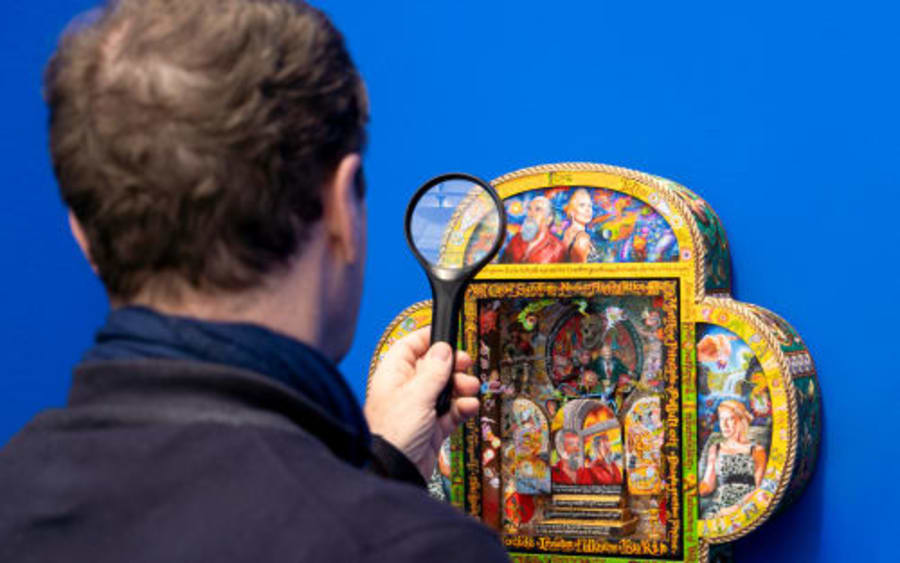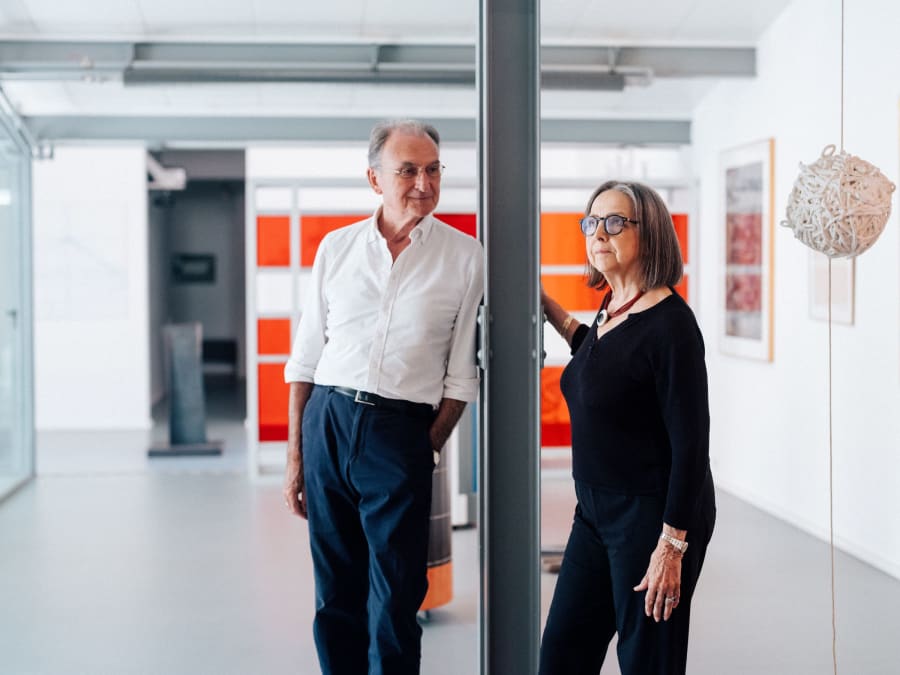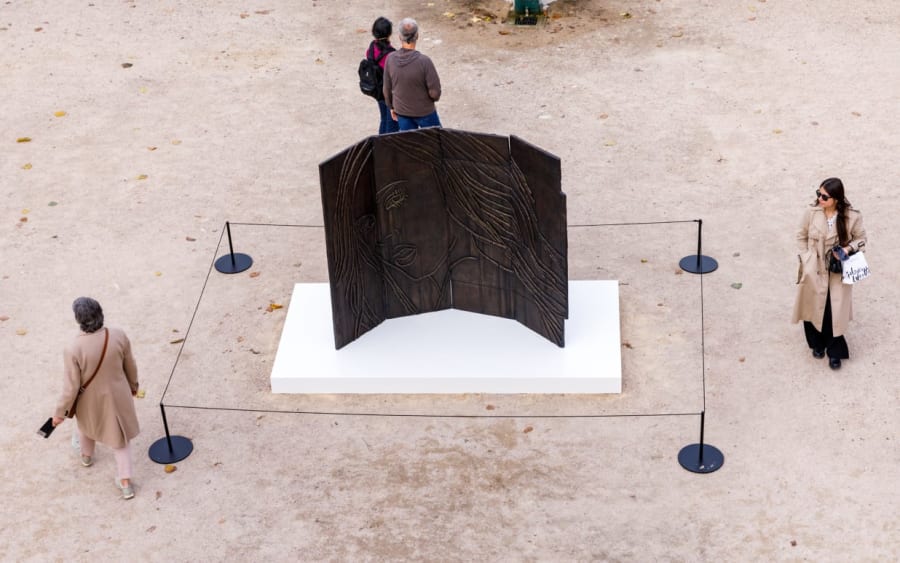The bond between artist and patron is long studied, sometimes fraught, and often fascinating. For centuries, rulers, royals, and wealthy patrons housed, fed, and funded the artists who in return rendered their faces and conquests for posterity. Later, even as 20th-century avant-gardes attempted to assert artistic autonomy, artists remained tied to their buyers via an ‘umbilical cord of gold’ – or so claimed critic Clement Greenberg in 1939.
Now, as the first quarter of the 21st century wraps up, what kinds of relationships do artists have – or want – with art collectors? What does patronage look like today? How often do artists truly befriend collectors? How do relationships between artists and collectors shift as the artist’s career progresses? And what possibilities and potentials might future artist/patron relationships hold?
Art can ignite a unique bond between people. ‘A space opens up when someone engages deeply with your work, and the possibility of a sustained relationship emerges,’ says New York-based painter Adam Pendleton. ‘[This engagement] reveals a deeper understanding of who you are [as an artist] and how you understand the world.’ This can and does lead, in many cases, to lifelong connections based on ideas, worldviews, and surprisingly mutual support.
Mire Lee, a Korea-born artist living in Berlin, initially found the idea of people buying her work somewhat ‘alien’ to her practice: Her large-scale kinetic sculptures, like those recently on view in ‘Mire Lee: Open Wound’ at the Tate Modern’s Turbine Hall, are often monumental and ‘messy’ (her word), although she also makes smaller, more collectible pieces. She met New York-based collector Miyoung Lee through Tina Kim, one of her gallerists (the others are Sprüth Magers and Antenna Space), after the former bought a challenging work. ‘Tina called me and told me Miyoung and I should meet,’ explains Mire Lee, so they did. The first encounter involved a Korean meal and shaved ice in New York’s Koreatown, and now the collector feels like a close relative (‘I knew right away that Mire was someone special,’ says Miyoung Lee).
Lee doesn’t know all her collectors, ‘but I sometimes want to know who they are,’ she says. Speaking on the phone from Los Angeles, where she’s installing a show in Sprüth Magers’s California outpost, she tells the story of the late Jean Châtelus, who bought one of the first works Lee sold, Ophelia (2018) in 2019. ‘I was a no-name artist at the time,’ she says. ‘He recently passed away, and he gave his collection to Centre Pompidou.’ Lee never met him, but when she saw her work amongst his other holdings, ‘it was a strange sadness, because I saw how my work fit into his collection. I didn’t realize what it meant to be part of a collection. In retrospect, I see what it means to be seen by someone.’
Artist Tomás Saraceno chuckles as he remembers his first buyer in the early 2000s: fellow artist Thomas Bayrle, at the time his professor at the Städelschule art school in Frankfurt. The Berlin-based Argentine artist has since established a vast, visionary multimedia practice. Sitting at his workspace on the top floor of an East Berlin factory building, he thinks about the many collector relationships he has enjoyed, but can ‘count the ones close to me on my fingers,’ he says, holding his hands up.
His research-based practices produce collectible works ranging from large installations and sculptures to drawings, editions, photographs, two-dimensional works made of spider webs, and even whimsical one-offs like a deck of spider-based oracle cards. Beyond these, however, are also collaborations with institutions like the Massachusetts Institute of Technology, architectural structures, experiments with spiders and their webs, and sweeping institutional shows. He also founded and runs the nonprofit Aerocene Foundation and has launched multiple philanthropic activities, some of which have received financial support from invested individuals.
Which brings us to patronage. Ongoing support to an artist often involves a collector commissioning works for domestic spaces, as it always has: ‘I’m working on a sculptural commission for a dear friend and important collector – a friendship that also took about 10 years to evolve,’ says Pendleton. But patronage today is just as often about contributing to the production costs of ambitious institutional projects – and frequently the only way for a major museum exhibition to come together. Saraceno’s 2018 Palais de Tokyo show ‘On Air’, which filled the Paris institution, involved the support of ‘about 20 collectors,’ he says, ‘and in return they received a work from the show, or a special piece.’
Francesca Thyssen-Bornemisza, the well-known collector who runs Ocean Space in Venice, was an early patron of Saraceno’s work. The two are now good friends, even attending each other’s family events and exploring intersecting interests (the Aerocene Foundation is about decoupling flight from fossil fuels and supporting Indigenous rights, among other things; Thyssen-Bornemisza’s TBA21 has made researching and preserving the earth’s waters a passionate mission). As an artist’s career progresses, collecting can become patronage, or even morph into collaboration.
Patrons also supported Mire Lee’s Turbine Hall show. ‘A lot of my projects have been funded by individual collectors, through my galleries,’ she says. ‘I didn’t know this model before showing in the United States. My Tate project had many collectors coming together.’ Pendleton, in a recent story in The New York Times, noted that his collectors Michael Forman and Jennifer Rice helped support the restoration of Nina Simone’s childhood house in North Carolina with three other artists. ‘It can be life-changing and affirming when someone makes an idea you have possible,’ he says. ‘Some collectors understand that and want to make that shift. It also makes the artist more accountable.’
All three artists have encountered their own works in a collector’s home: ‘It’s as though the ideas embedded in the work have had an opportunity to settle and thrive in a more intimate space, without the demands of the institution or market,’ says Pendleton. ‘It just is. It’s relaxed and breathes; it’s present and embraced.’ Lee agrees that seeing her work’s final home is something special: ‘It reminds me that there’s something almost sensual having an artwork living so close to your body,’ she says. Saraceno recounts a story of collectors John and Ulla Ginsborg in Denmark, who saw his underground show at Cisternerne in Copenhagen in the early 2020s, bought all of the works within it, and then built a smaller version of the cistern to display some of the pieces in a similar environment. Involved in the development of the new structure, the artist was thrilled the first time he saw the mini-cistern in action.
It seems that a collaborative spirit is brewing in some artist-collector relationships. Sometimes the bond can focus on discourse and strategy: Pendleton meets with one of his collectors once a month, in a structured way, to discuss the state of the art world. But it can also be about social engagement or even thinking of new ways of owning art and distributing income: ‘[Younger collectors] are more able to respond to social and political issues and engage. And what about collective ownership?’ asks Saraceno, showing me a mockup of a project involving children’s drawings inspired by clouds. His idea is that any income made involving community-based art could be evenly split between artist, gallerist, and the community, and ‘ownership’ would be temporary or held in group stewardship. At the moment, the artist – with Aerocene and the Indigenous communities of the Salinas Grandes and Laguna de Guayatayoc in Argentina – is looking for support in mounting a new project, Sanctuary of Water, that will be co-produced by Haus der Kunst in 2026. The project will consist of giant half-spheres constructed on threatened Indigenous land. ‘With projects like this, it’s about having a leap of faith,’ says Saraceno.
Pendleton thinks back to his earliest experience with a buyer – someone with whom he can no longer cultivate a living relationship, but a special connection nonetheless. ‘My very first collector was Sol LeWitt,’ he says. The Conceptual artist saw Pendleton’s work in a group show mounted by the elder artist’s assistant. ‘I was a teenager,’ says Pendleton. ‘He said he wanted to buy it. The owner said, “Don’t buy it, trade with him.” So we traded works. It was incredible.’
Kimberly Bradley is a writer, editor, and educator based in Berlin. She is a commissioning editor at Art Basel Stories.
Adam Pendleton’s ‘spray light layer emerge’ is on view at Pace, Berlin, from September 11 to November 2, 2025
Mire Lee’s ‘Faces’ is on view at Sprüth Magers, Los Angeles, from September 10 – October 25, 2025
Caption for header image: Tomás Saraceno and Francesca Thyssen-Bornemisza at the opening of More-than-humans, Museo Nacional Thyssen-Bornemisza, Madrid, Spain, 2019. Photo: Cipriano Pastrano Delgado.
Published on August 29, 2025.


